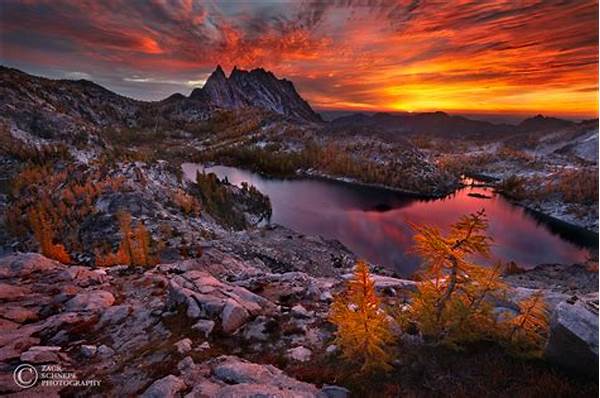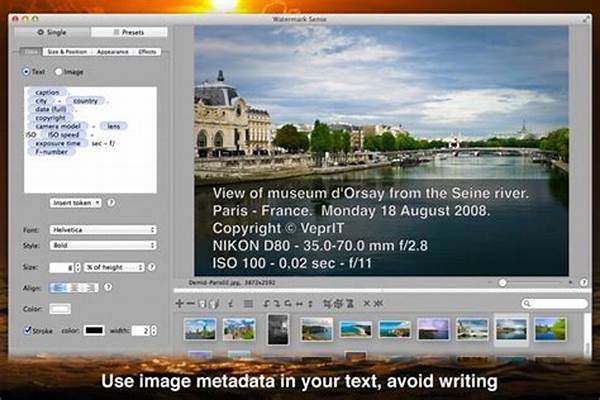Hey there, photography enthusiasts! Ever found yourself gazing at a photo and feeling like it just didn’t capture the moment as you remembered it? Enter high dynamic range (HDR) photography, your key to creating images that truly pop. It’s like giving your photos superpowers to balance out those tricky lighting situations. Let’s dive into HDR photography and unravel its magic, shall we?
Read Now : Awe-inspiring Visual Transformation Narratives
The Magic Behind HDR Photography
So, what’s the buzz about high dynamic range (HDR) photography? Imagine having control over every little detail, from the darkest shadow to the brightest highlight. HDR photography blends multiple exposures of the same scene to produce a single image that highlights the full spectrum of light. You know those high-contrast scenes where your camera struggles to pick whether it wants to show off the details in the shadows or highlights? With HDR, you don’t have to choose anymore. It’s like having your cake and eating it too!
Now, you might be thinking, “Isn’t that what editing software is for?” Sure, editing helps, but HDR photography is all about snapping multiple photos at varied exposures and merging them into one stunning image. It’s about capturing what your eyes can see but your camera usually can’t. And hey, the best part is, you don’t need to be a pro to try it. There are plenty of apps and camera settings designed with beginners in mind. So, go on, give it a try!
Dive into HDR and you’ll quickly see why photographers love it. Whether you’re shooting landscapes or portraits, the option to capture more dynamic lighting situations means more creative freedom. HDR photography is like adding a new tool to your creative toolkit—empowering you to shoot in all kinds of light conditions without losing those intricate details.
Tips to Get Started with HDR
1. Experiment with Exposure Bracketing: If your camera supports it, use this feature to take several shots at different exposures for the best high dynamic range (HDR) photography.
2. Use a Tripod: Stability is key. A tripod can prevent those little shakes that might mess up your HDR shots.
3. Try HDR Apps: Many smartphones have HDR modes. Don’t shy away from apps that specialize in high dynamic range (HDR) photography.
4. Edit Thoughtfully: Overdoing HDR can make photos look unreal. Aim for balance and natural-looking results.
5. Practice: Like anything, practice makes perfect. Keep experimenting, and soon enough, you’ll master high dynamic range (HDR) photography.
Popularity of HDR Photography in Today’s World
Why is high dynamic range (HDR) photography taking the photography world by storm? Well, in this age of Instagram and Pinterest, everyone wants their photos to stand out. HDR has become popular because it allows shooters to create vivid, eye-catching images that grab attention immediately. Plus, the technology behind HDR is more accessible than ever. Cameras and smartphones equip even hobbyist photographers with the ability to harness HDR magic. It’s all about elevating those mundane shots into something extraordinary that really tells the story.
Read Now : “outdoor Lighting Iso Balance Tips”
HDR images have that wow factor, don’t you think? They transport you to the moment the image was taken, showcasing all the intricate details. Whether you’re on a travel adventure capturing breathtaking landscapes or just shooting everyday life, HDR helps encapsulate those visual stories in a full spectrum of light. With a sprinkle of HDR, even an average photo can turn into a stunning masterpiece. It’s no wonder high dynamic range (HDR) photography is such a popular tool nowadays.
Building an HDR Photography Portfolio
For those serious about photography, building a portfolio with high dynamic range (HDR) photography can set you apart. As HDR becomes more prevalent, developing this skill can be a standout feature on your photography resume. Prospective clients and employers will see your ability to manipulate lighting, create depth, and capture stunning visuals. It’s not just about knowing how to use a camera, but showcasing a flair for creativity and an understanding of complex technologies. That’s what makes your work resonate and leaves a lasting impression.
Moreover, HDR photographs can help highlight your versatility. Being able to work in different lighting conditions and producing quality images means you’re prepared for almost any photographic challenge. This adaptability can make your work much more appealing. So, flex those creative muscles and let your HDR photography skills shine in your portfolio. The world of opportunities in high dynamic range (HDR) photography awaits!
HDR Photography: From Hobby to Passion
You know, starting with high dynamic range (HDR) photography can just be a casual exploration, but oh boy, it can easily turn into a full-blown passion! It’s the kind of thing that hooks you as you watch your images come alive. First, you’re tweaking those settings and shooting what catches your eye, then suddenly, you find yourself climbing up a hill at sunrise to catch that perfect light moment. Yep, it’s that addictive.
What’s fascinating is how it changes your perception of light and scenes around you. Everyday places start looking like potential masterpieces. Trust me, once you’ve gotten a taste of playing with shadows and highlights in your HDR shoots, ordinary reality gets a whole lot more interesting. It’s not just a photography technique; it flips on a switch that amps up your creative vision to the next level. You’ll not only see the world differently but capture it in incredible ways that you never imagined possible.
The Fun Side of HDR Photography
Alrighty, let’s chat about the fun bits of high dynamic range (HDR) photography. First off, no need to stress if your initial photos look a tad odd. The HDR process can sometimes result in quirky, surreal images initially—it’s all part of the learning curve. You’ll be tweaking those sliders in your editing software and laughing at some of the outrageous images you can create. It’s all in good fun and part of understanding how HDR works.
Also, you get to play with your shots creatively. Say you’ve got a high-contrast scene where the sky and foreground are at opposite exposure ends. This is where HDR photography shines! You can capture it all beautifully and balance it like a pro. Plus, there’s a whole community of HDR enthusiasts out there ready to share tips and tricks. You’ll be in good company as you explore all the wonder that high dynamic range (HDR) photography has to offer. Have fun with it and don’t be afraid to push the boundaries of creativity!



